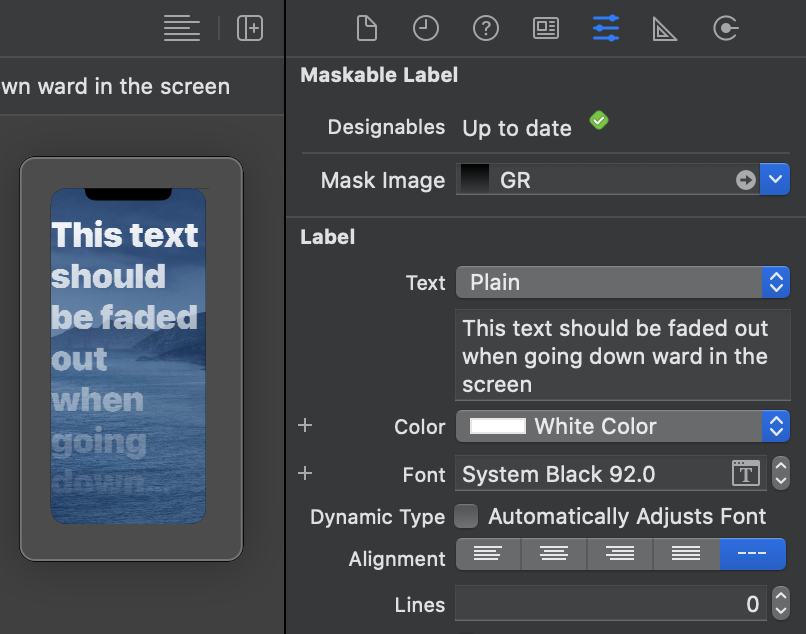Reputation: 195
Gradient mask on UIView
I have a UIView and want to have the bottom part of it fade out to 0 opacity.
May this be done to a UIView (CALayer) in order to affect an entire UIView and its content?
Upvotes: 15
Views: 11930
Answers (2)

Reputation: 119310
Using an Image as the mask to prevent Layout issues.
Although Vladimir's answer is correct, the issue is to sync the gradient layer after view changes. For example when you rotate the phone or resizing the view. So instead of a layer, you can use an image for that:
@IBDesignable
class MaskableLabel: UILabel {
var maskImageView = UIImageView()
@IBInspectable
var maskImage: UIImage? {
didSet {
maskImageView.image = maskImage
updateView()
}
}
override func layoutSubviews() {
super.layoutSubviews()
updateView()
}
func updateView() {
if maskImageView.image != nil {
maskImageView.frame = bounds
mask = maskImageView
}
}
}
Then with a simple gradient mask like this, You can see it even right in the storyboard.
Note:
You can use this class and replace UILabel with any other view you like to subclass.
🎁 Bones:
You can use any other shaped image as the mask just like that.
Upvotes: 2
Reputation: 170839
Yes, you can do that by setting CAGradientLayer as your view's layer mask:
#import <QuartzCore/QuartzCore.h>
...
CAGradientLayer *maskLayer = [CAGradientLayer layer];
maskLayer.frame = view.bounds;
maskLayer.colors = @[(id)[UIColor whiteColor].CGColor, (id)[UIColor clearColor].CGColor];
maskLayer.startPoint = CGPointMake(0.5, 0);
maskLayer.endPoint = CGPointMake(0.5, 1.0);
view.layer.mask = maskLayer;
P.S. You also need to link QuartzCore.framework to your app to make things work.
Upvotes: 35
Related Questions
- SwiftUI masking gradient with UIImage
- Swift: Background gradient for UIView
- How to apply a gradient to a UIImageView using a UIImage as a mask
- How to make a UIView have an effect of transparent gradient?
- How to apply Gradient to UIView in iOS 10 on a real device
- Draw gradient inside UIView draw() with swift
- Horizontal Gradient to UIView
- Gradient Color Swift
- iOS - Draw gradient - Swift
- Multiple Colour Gradient with Label Mask in Swift (Xcode)
